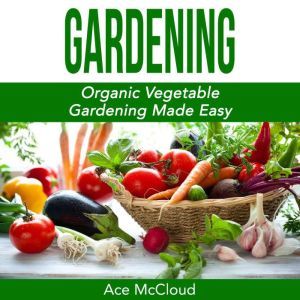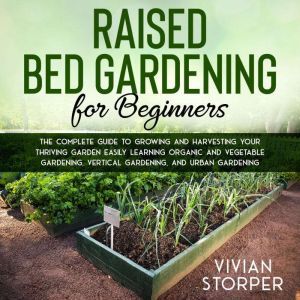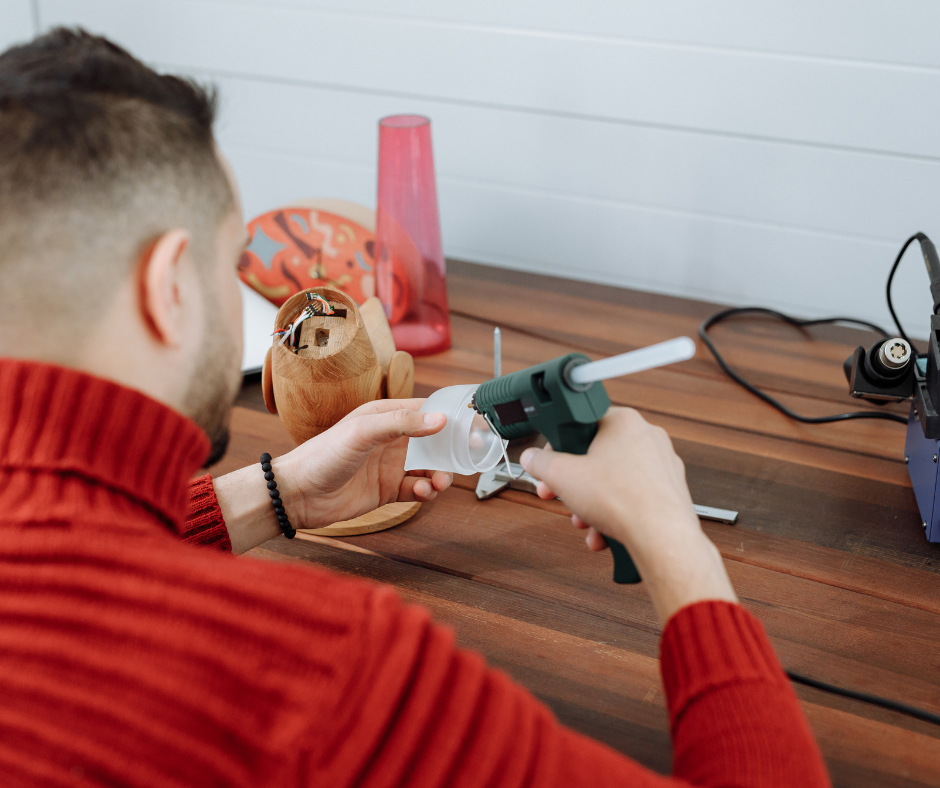
Organic vegetable gardening is the “in thing” these days as people have understood that the utilization of fertilizers and pesticides causes more damage than good.
Vegetables are important for everybody’s eating regimen. To spend somewhat favoring those organically grown and sold in the grocery store, maybe you ought to consider planting your own in the garden. It is extremely simple to do that even your children can join in and have a good time.
Ancient farmers never used fertilizers and pesticides and relied only on sunlight and irrigation, this concept is making a comeback. These will also encourage you to do this at home since you have access to the three most basic things namely soil, water, and sunlight.
The Importance of Organic Vegetable Gardening
First, organic vegetable gardening does not use any fertilizers or pesticides. The elements in these products are harmful to humans and people are at risk of absorbing them when they are eaten.
A study shows that the crops harvested have 50% more vitamins and nutrients compared to conventional farming methods. This will reduce the risk of people suffering from several diseases like diabetes, hypertension, heart disease, and certain cancers.
Also, organically grown vegetables taste much better because it is not contaminated with antibiotics.
Organic farming is not only practiced for vegetables. This is also being done for fruits and animal livestock.
Kids who drink milk will get more anti-oxidants, CLA, Omega3, and vitamins when this is extracted from pastured grazed cows. It will strengthen their bones and muscles.
You can purchase organically grown vegetables from the supermarket. Whenever you buy organically grown vegetables, remember to wash them before it is used. Although it is chemical-free, you don’t know what kind of compost was used to help it grow.
The packaging comes from the Department of Health, Quality Assurance International, California Certified Organic Farmers, or the Oregon Tilth Farm Verified Organic. The sad part is that most of these are only 50% to 70% organic.
This encourages homeowners who want to eat 100% organic vegetables, to grow these themselves.
What kind of organic vegetables can you plant?
You can also get into organic vegetable farming yourself by accomplishing this in your own backyard. You just need to get the supplies, prepare the land, and protect it from insects and other threats.
A few instances of this include broccoli, cabbage, onions, carrots, potatoes, and much more. You require to know which of them need to plant during the different seasons of the year.
Proper drainage is essential for your vegetables. If there isn’t, you can check if it is feasible to grow these using a raised bed.
When you have done your research, you can now purchase the seeds from the store. These are normally sold in packets so remember to read the guidelines before using them.
Planting the seeds
Planting the seeds for your organic vegetable gardening is the next stage of this operation. You can also buy them fully grown and then just plant them into the ground.
In both cases, you have to prepare the soil, and use compost. Also, make sure that these are safe from threats such as insects, weeds, and other animals that will eat what you have planted.
To prevent this from happening, you need to get a bird, a toad, and even other bugs to eat them. You can also use organic fertilizers, baby powder, or deodorant soaps as a good barrier. For weeds, the main thing you can do is pull this one by one starting from the ground. For animals, set up fences and use animal hair.
Mulch is another arrangement. This is produced by using chipped barks, garden fertilizer, leaf forms, and compost. It should apply at 3 to 4 inches or 8 to 10 cm starting from the ground for it to be compelling.
Some organic vegetables can also grow indoors. Take for instance that tomato that can grow using an organic container made out of clay, plastic, or wood. Just remember to give it some water daily and sunlight so it can grow.
You can keep the containers outside during the daytime. Further, if the weather is too cold, carry them indoors and keep them somewhere else like in the western or southern windows of your home.
Also, considering such containers isn’t to utilize soil yet rather a mixture of peat, perlite, and vermiculite.
Crop Rotation
As the conventional methods involve the use of harmful chemicals, the US Department of Agriculture has issued a new directive. This also encourages farmers to shift to organic farming.
With organic farming, agriculturalists will no longer need to plant crops using genetic engineering, irradiation, and sewage sludge. The goal here is sustainable development and the best way to make sure the soil used is always fertile is through crop rotation.
Crop rotation is the method of growing a different crop in the same area where another crop once occupied. This keeps the soil’s nutrients fertile so they can utilize them again in the next season and so forth.
The government offers incentives and subsidies to farmers who choose to follow this plan. It is not difficult to implement. Farmers just need the willpower to unlock their minds and make the change.
Organic Vegetable Gardening At Home
Anyone can do organic vegetable gardening at home because the principle behind this is the same that they do on the farm. The only difference is that you work in a smaller area and you get to choose what you like to plant.
The first thing you have to do is find an ideal location. A lot of people do organic vegetable gardening in their backyard. Remember, whatever you are planting should get at least 6 hours of sunlight every day and access to water. If you don’t have adequate drainage, you will have to do organic vegetable gardening using a raised bed.
When you find an ideal location, you have to cultivate the land. For that, you will require your gardening tools and a pair of gloves to pluck out the weeds on the ground. This might take a few days to ensure the area is ready for planting.
Check the location is a good spot by testing it with some compost and mixing this with the soil. It should be able to integrate and stabilize itself with the soil. This suggests that you can start planting your crops.
You can make your own compost using coffee grounds, food waste, dead leaves, grass clippings, or even manure. They again serve as excellent fertilizers.
Note that some of these may not suit the land you are planting these on. Several factors are beyond your control such as the weather, pests, and other plant-borne diseases. Do some research to avoid mistakes on what vegetables are ideal to plant and also ask fellow organic gardeners.
One way to protect the crops you are planting is by planting a variety of them at a time. The idea behind this is some of these protect each other from pests. Another defense system that works is getting the help of Mother Nature as birds, certain insects, and even toads. It is proven to be useful.
If you live in an area where animals may eat your vegetables, put fences so they are not able to get through. Other tools you can use are animal hair, baby powder, and deodorant soaps.
Removing the weeds is a part of preparing the land. Always remember that new weeds grow after some time so you have to inspect the area from time to time.
Planting your own organic vegetable garden will surely save you money as these are quite expensive in the supermarket. If you have some excess stocks, you may give some to your neighbors or make some money by selling them.
Make Your Own Compost
For instance, in fertilizers, you have the choice to make your own compost. But this is no easy task. Doing so will take a lot of time and effort on your part. The first method to go about this is to gather dried leaves, certain animal manure, vegetable peels, and the like in a compost bin. You have to deal with it periodically to add moisture once in a while and to make sure that you are doing things right.
The second method is to pile up the materials that you have gathered on the ground. Store those up in a space that you will allocate for your compost. You just leave them there and let nature carries its course through those materials.
Through time, years even, that pile will be turned into compost materials that you can also use as fertilizers for your garden. But you must choose only the part that is not infested with pests. If not, you’ll have bigger problems with your garden.
The latter method will take longer. And because it is open and you cannot regulate it, certain elements can acclimate into the pile which can harm your garden. So when you are already using that, you still need to check eagerly so that you will maintain your garden’s health and beauty.
Organic Vegetable Gardening With Containers
Organic gardening is not only for farmers or people who have backyards. The use of organic vegetable containers makes it people without a backyard the opportunity to plant their own crops at home. The containers can also hang besides simply putting these on the ground. If the container that you bought doesn’t have any holes, make a few.
Further, organic vegetable gardening containers have advantages. You can use its décor whenever you determine to let it get some sunlight when you place it by the balcony or patio. If the weather gets too cold outside, you can bring it indoors. But best of all, you don’t have to deal with certain threats that happen outdoors like weeds, or soil-borne diseases.
Soil is not used in organic vegetable gardening containers. You need to use a potting mix that is much lighter and provides excellent drainage. You need to use organic fertilizer though to help it grow. An example of this is a mulch that is made from chipped bark, garden compost, leaf molds, and manure. This keeps it from drying out.
Another important thing the plants inside these containers need is a lot of water. Ideally, you should put these in small amounts at least 30 minutes after initial watering. This is because putting in too much could drown your plant.
What are the ideal vegetables to plant in these containers? These are bush beans, capsicum, carrots, eggplant, lettuce, onions, peas, radishes, spinach, and tomatoes.
You understand that organically grown vegetables need daylight. Assuming you have a lot of containers and it is getting pretty windy outside, you can protect them from falling by grouping these with the taller ones with these as your walls.
The best organic vegetable gardening containers are those made from clay, plastic, or wood. The length of the roots and their width is the deciding factor when picking what size you will buy. For instance, if your vegetable happens to have 6 inches of roots and grows to about 10 inches wide. It is best to get a container that measures 8 inches deep and 10 to 12 inches wide. Still, you must give room for allowance as this may grow bigger.
We mentioned earlier that one of the advantages of the organic container is that you don’t need to deal with insects. But sometimes, bugs like the hookworm manage to get to your plant. If this happens, just bring the container to the sink and wash the leaves. If there are slugs, get rid of them by sprinkling diatomaceous earth on the soil.
Also, if there are aphids on your vegetables, fight fire with fire by getting other bugs to do the dirty work. A pack of ladybugs will do the trick without rendering any collateral damage.
Steps to Success with Organic Gardening
If you have long been curious about organic gardening, you may now acquaint yourself with how things are accomplished in this process. Yet, you must not tire out from learning new things to help you with this venture.
It is vital to update yourself on how things are happening. You should tune in with the local gardeners in your area so that you can talk things out with enthusiasts like you.
If your goal in going organic in terms of gardening is to help nature, then you are doing great. For sure, nature itself will find ways to help you out and for you to be able to see solutions to your problems just around the corner.
This is how generous nature is. What’s more, this is also the basic concept of the organic process of gardening. It is to reward nature with what nature has bestowed you with. In gardening, you will have to veer away from synthetic materials. You just need to utilize what is found on the ground or the environment around you.
Remember that you must be picky with your plants. Ask a local vendor what plants will grow easily in your location. You must not opt for something you like that will not persist the site’s conditions.
Know the art of mulching. You have to do this periodically in your garden beds. This will destroy the growing weeds. It will help you to monitor the unnecessary pests and get rid of them. This also moderates the temperature of the soil. And by mulching it, you’ll control the soil from eroding.
Include a variety of plants in your garden. This way, you can attract beneficial insects. These are the types that would feed on the pests that your garden may incur.
And the most important thing to accomplish in organic gardening is to befriend your plants. You must know all of them fully well. This way, you will have an idea as to what to do in cases where an issue strikes and you have no one to guide you.






2 thoughts on “Organic Vegetable Gardening”